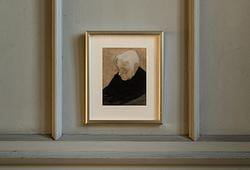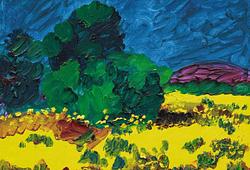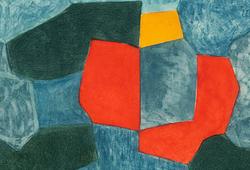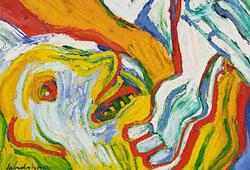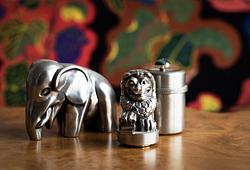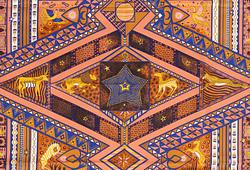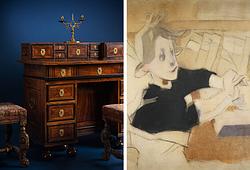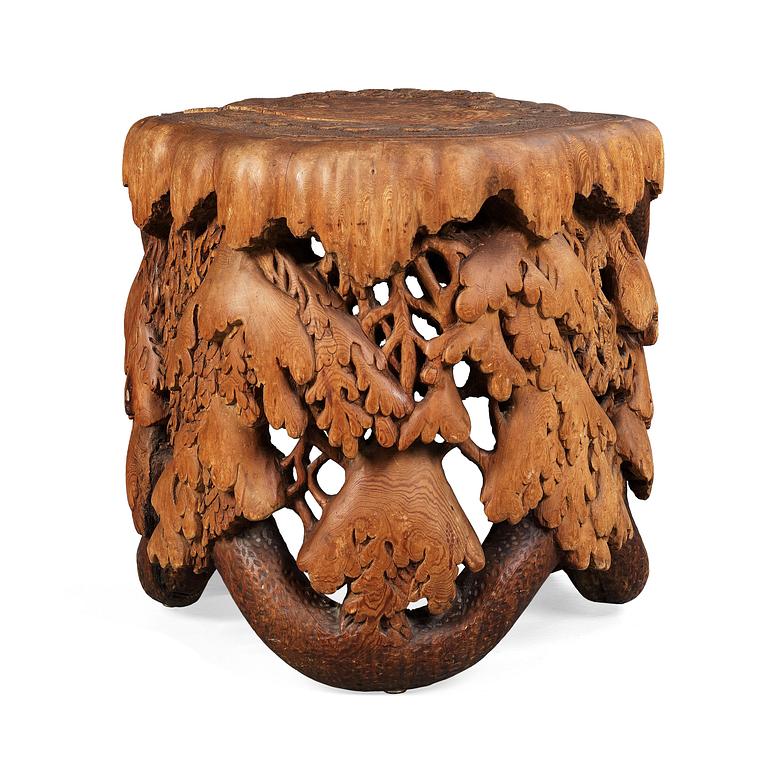Knut Fjaestad
A Knut Fjaestad Art Nouveau sculptured pine table, Sweden ca 1900.
Height 64,5 cm, the top circa 66 x 67 cm.
Dry cracks, reinforced underneath the top.
Provenance
The Fjaestad family
More information
Knut Fjaestad (1860-1937) var en äldre bror till Gustaf Fjaestad. I hela sitt vuxna liv skulpterade Knut i furu på fria stunder.
Av ursprungligen fem barn i familjen Fjaestad var Knut näst äldst och Gustaf yngst.
Fadern var född i Norge och kom att utbilda sig till skomakare i Paris. Vid återvändandet till Sverige stannade fadern i Stockholm och kom att bli hovskomakare till Drottning Desirée. Skomakeriet hade som mest ett trettiotal anställda.
Så småningom lät Knut köpa en fastighet i Gamla Stan, på Västerlånggatan, där han först både bodde och öppnade syateljé- konfektionsbutik/modebutik.
År 1907 köpte Knut med familj hus vid Skärsätra Gård på Lidingö, en 1700-talsfastighet som han kom att renovera med varsam hand. Hans hustru dog redan år 1912.
På 1920-talet startade Knut Fjaestad en firma för vintillverkning av svenska bär och blev snart Kunglig Hovleverantör. Man gjorde både rödvin och vin av Madeiratyp. Vinet kallades ”Bjälbo-tappning” och tillverkningen var mycket framgångsrik men med andra världskrigets utbrott och därmed påföljande sockerbrist var man tvungen att lägga ned tillverkningen.
Knut Fjaestad blev Lidingö trogen livet ut och bodde kvar i samma hus.
Vid sidan av sitt stora entreprenörskap tycks Knut ha älskat att på lediga stunder skulptera och snida i trä, framför allt i furu.
Knut och brodern Gustaf Fjaestad stod varandra nära, det är svårt att säga vem av bröderna som initialt började att skulptera möblerna i den egenartade, naturalistiska jugendstil som båda bröderna arbetade i.
Den tidigaste kända stabbestolen av Gustaf Fjaestad är daterad 1894 (Bukowskis Moderna katalog 553, katalognr 709, oktober 2009).
Sannolikt var det Gustaf Fjaestad som inspirerade Knut
Efter år 1907 och flytten till Lidingö fick Knut i alla händelser större möjligheter att med egen verkstad på gården att arbeta med sitt skulpterande, något han fortsatte med livet ut, framför allt i form av möbler i olika slag. Hans mästerverk, en tronstol i fullfjädrad jugend, tog honom hela sju år att färdigställa.
Designer
Inspired by his younger brother Gustaf's so-called "stabbestolar," Knut Fjaestad began to carve wooden furniture around 1907. He had then recently acquired the 18th-century house Bjälbo at Skärsätra farm on Lidingö, and had previously been active as a merchant in Gamla stan in Stockholm. His brother Gustaf Fjaestad had been carving furniture since 1894, when the earliest known "stabbestol" was made. This type of chair was produced and took its shape from a log (stabbe). Unlike his brother, who studied at the Royal Academy of Fine Arts, Knut was self-taught. Knut Fjaestad himself called his carved wooden furniture "works of imagination" and first showed them at an exhibition on Birger Jarlsgatan in Stockholm in 1923.
Read more



